One of the worst forms of propaganda about text and reading in formal schooling is that any text has a fixed meaning, independent of the reader, the reader’s history, or the writer and the writer’s history.
Traditionally, K-12 schooling, often in English courses, has implemented a very reduced version of New Criticism that frames all text meaning as a static formula whereby the reader adds up the techniques and discovers an authoritative meaning (that is singular and, again, not grounded in the people creating meaning or the conditions surrounding either the writing or the reading). More recently this anemic approach to text and reading has been reinvigorated by the “close reading” movement embedded in the failed Common Core era.
In 2020 as the Trump era could be coming to a close and the U.S. is being ravaged by a pandemic and another round of something like mainstream racial awareness, I re-read James Baldwin’s “Letter from a Region in My Mind.”
The 1962 publication of this essay (which becomes a section of The Fire Next Time) had a distinct historical and personal set of purposes—Baldwin’s relationship with the church and Christianity as well as his being courted by Elijah Muhammad for the Nation of Islam.
This essay has a powerful online presence for The New Yorker currently:

One of Baldwin’s persistent messages in his nonfiction is the inextricable relationship between white and Black America, and, as he stated, “[t]this rigid refusal to look at ourselves [that] may well destroy us” (“Lockridge: ‘The American Myth'”). “Ourselves” and “us” are telling in that Baldwin sought a new self-awareness for both white and Black Americans even as he was especially focusing on white fragility and denial.
As I re-read a few days ago, I shared quotes on social media, drawn to how this essay speaks vividly to now and to the lingering white problem in the U.S., a white problem that fuels racism, still, through white denial.
One of the first essays by Baldwin I invite my first-year writing students to read in my Baldwin/#BlackLivesMatter seminar is “A Report from Occupied Territory” since this 1966 essay details the historical/systemic racial/racist inequity of police violence in the U.S. that is a part of the two Americas confronted early in “Letter” by Baldwin:

A paradox of racism driven by white supremacy narratives is that white power has demands for “other people” that white leaders and most white people cannot and do not maintain. While some confront the tendency of hypocrisy in leadership, we far too rarely ascribe that to a feature of white supremacy narratives and cultural myths. In fact, this hypocrisy may be more embedded in whiteness than any aspect of leadership.
One of those white lies is being replayed in the respectability politics of white people focusing on marches and demonstrations by framing them as “rioting” and “looting.” This misguided attention (distractions from the police shootings and killing that prompted the demonstrations) is also a calculated effort to ignore or erase the white violence and economic theft that are essential to white dominance and capitalism.
U.S. enslavement of Black people made capitalism “successful” for white America, and white economic theft of Black people and on the backs of Black people remains a daily aspect of this country’s “success”—as Baldwin explains:
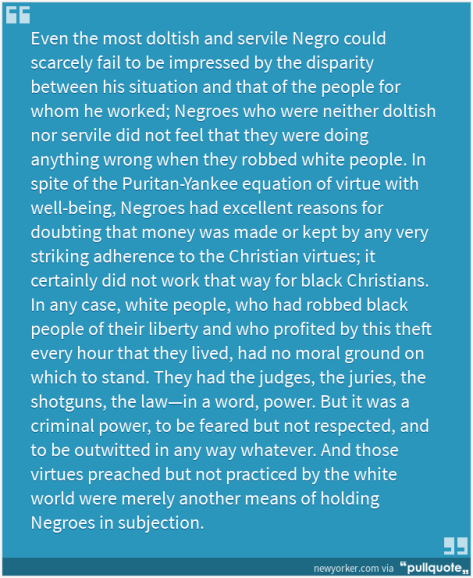
The role of racism in capitalism and the U.S. market is paralleled by that same corruption of Christianity, with Baldwin’s message prescient for the deplorable embracing of Trump by conservative Christians:
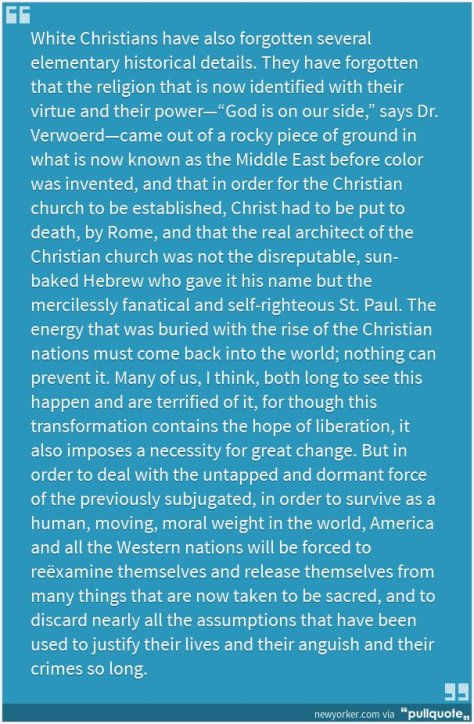
Racism is a race lie, an economic lie, and a religious lie.
For Baldwin, the latter meant that Black Americans needed to walk away from a fatally corrupted Christianity:

Compared to Martin Luther King Jr., Baldwin poses a much blunter confrontation of the white progressive and the hollowness of progressive policies, the incredibly slow incrementalism bending (maybe) toward King’s “justice”:

As some in the U.S. feel hopeful in 2020 that the promise of racial justice seems closer at hand, Baldwin, again, acknowledged this possibility in the need for the types of disruptions filling the streets across the country in the wake of the killing of George Floyd:
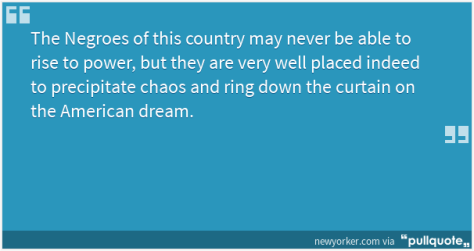
That American Dream is a myth not framing Truth but myth that is a lie—as Paulo Freire explains, “myths that deform us”:
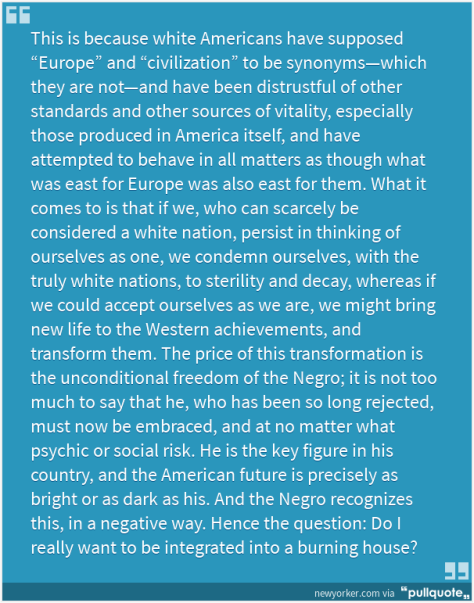
Few moments are more apt in 2020 than this closing question, which also forces the reader to consider that white denial also ignores that the house is, in fact, burning even as white supremacy maintains the myth of white superiority.
Baldwin continues his rhetorical brilliance by confronting the corrosive nature of deficit ideology (whereby Black people are framed always as lacking white qualities) as he builds again to his recognition of white people refusing to see themselves even as they beg to always be at the center of everyone’s consciousness:
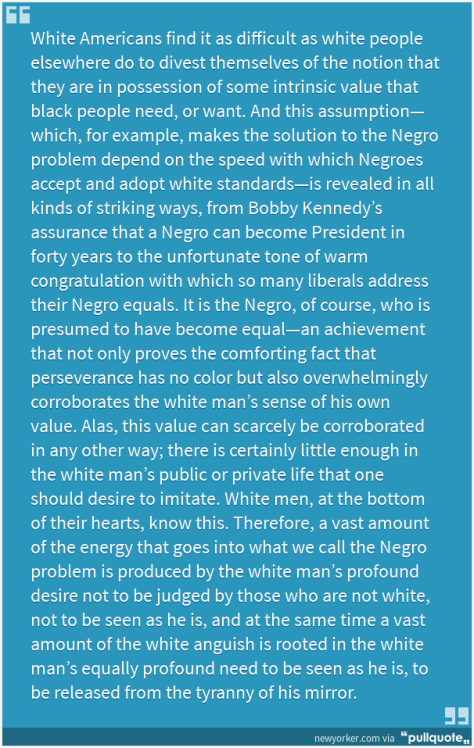
This essay becomes a brilliant and enduring unmasking of white America:

Being white is inevitably being “the slightly mad victims of their own brainwashing.”
By the end, Baldwin returns to a moral grounding and phrase that has remained connected to Baldwin as has his resilient hope and trust in the power of love:
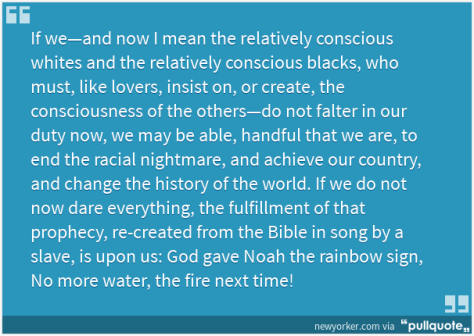
Baldwin’s writing as hope and prophesy seems too long delayed, a “dream deferred” because, as Langston Hughes also mused, “(America never was America to me.)”

One thought on “A Conversation in 2020 with James Baldwin’s “Letter from a Region in My Mind””
Comments are closed.